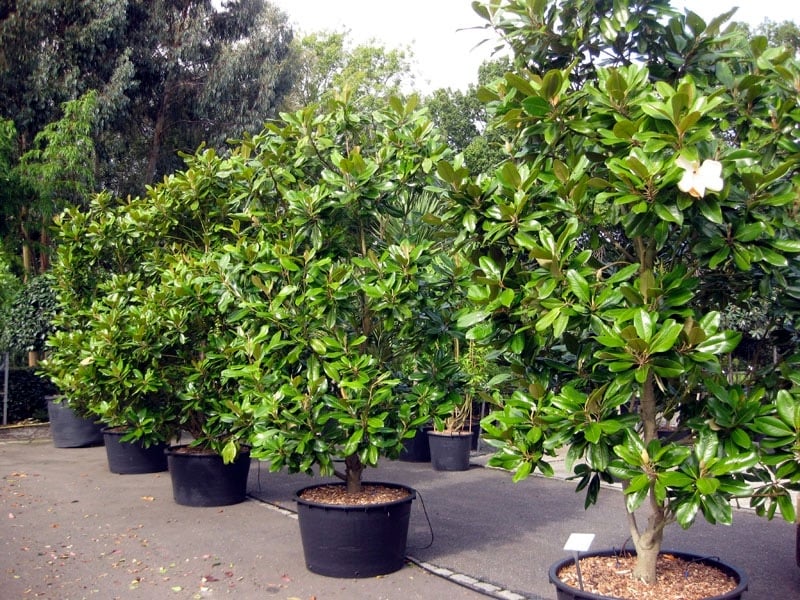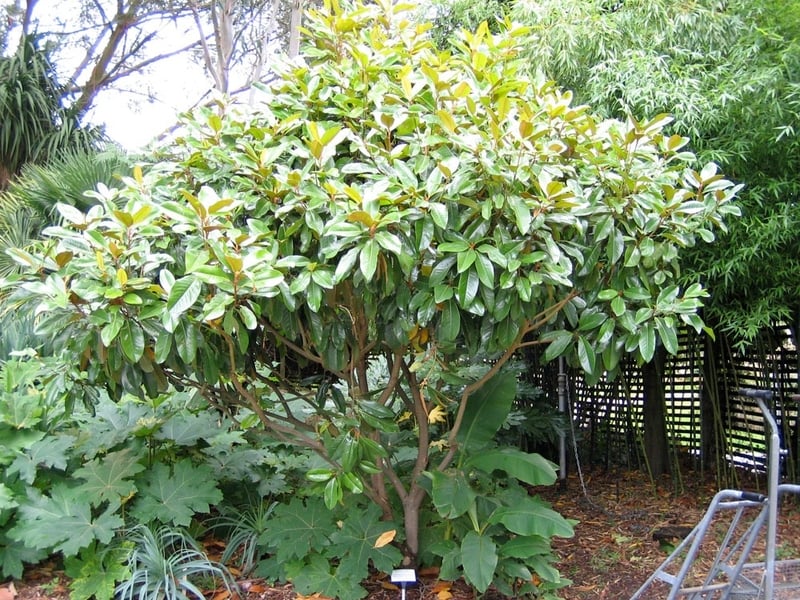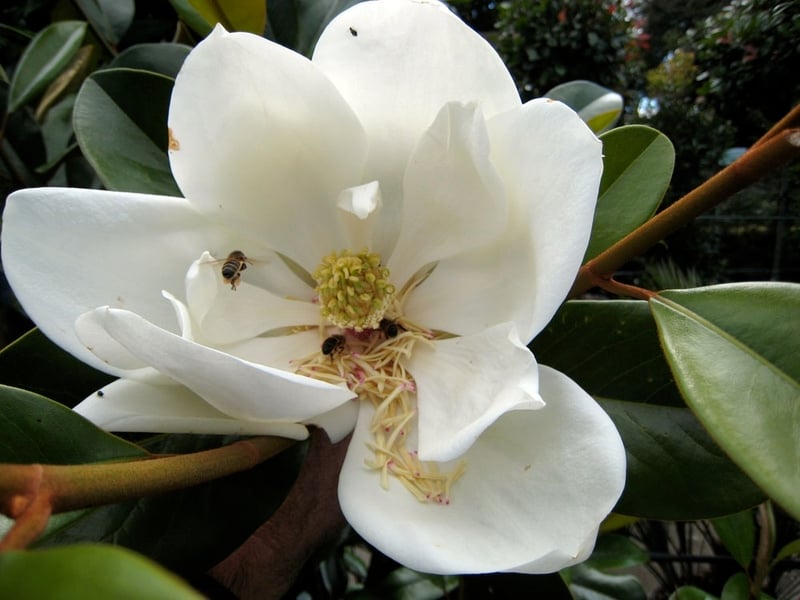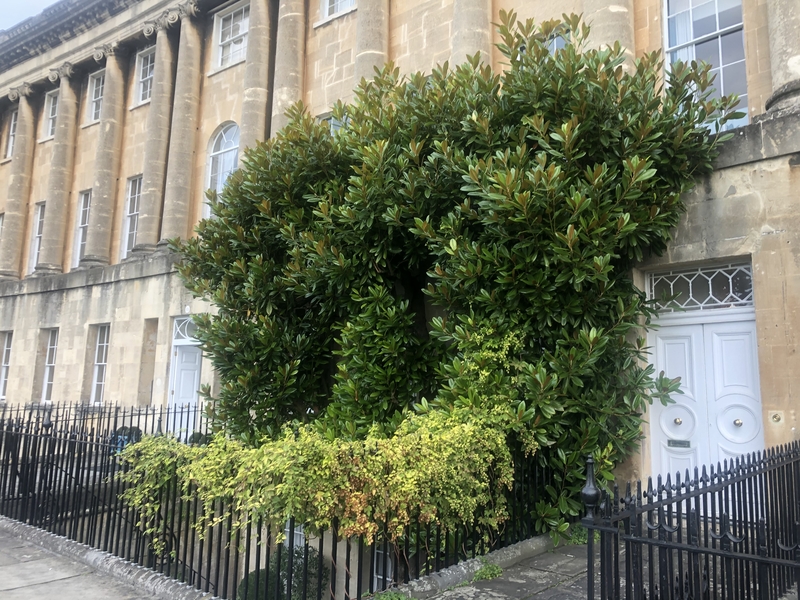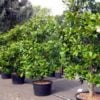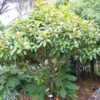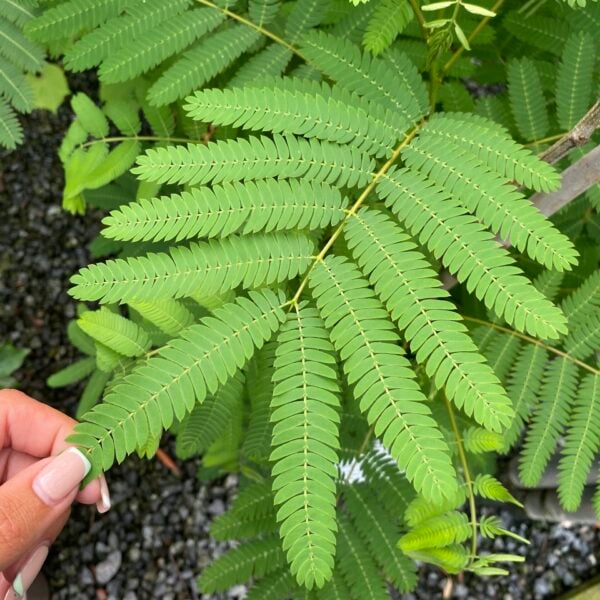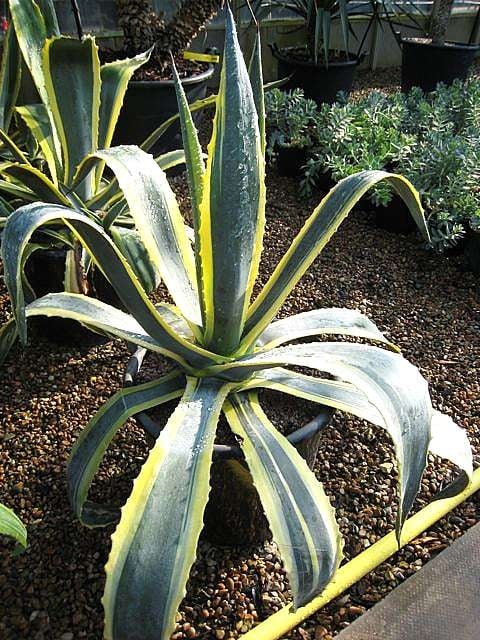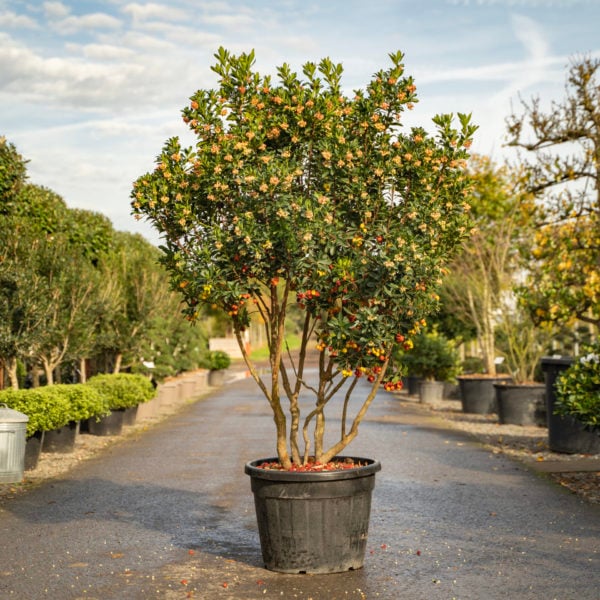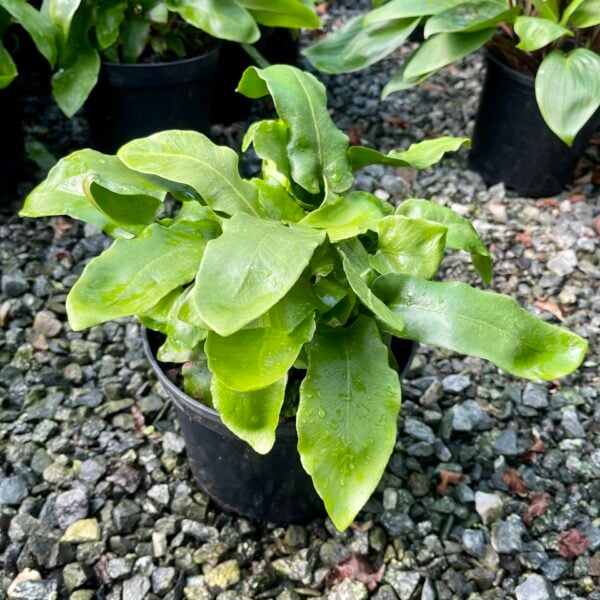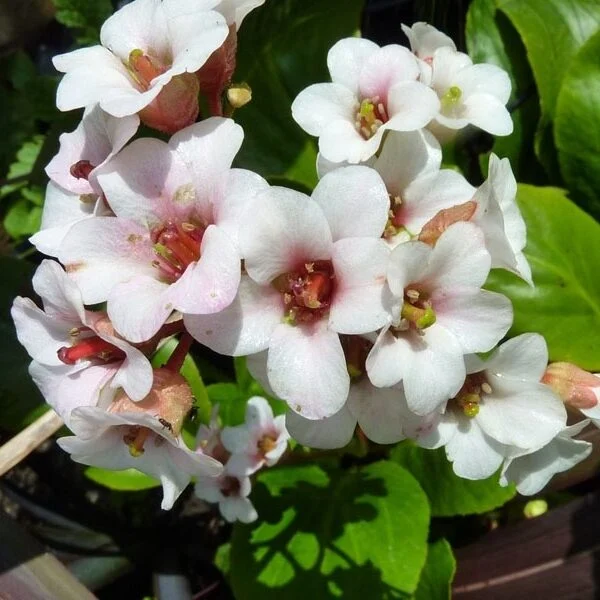Magnolia grandiflora (Evergreen Magnolia)
Evergreen tree. Big glossy leaves, huge fragrant white flowers. Slow to establish but long lived and robust. A wonderful subject for Creative Maintenance. 20ft after 20 years. Please contact us for stock availability and sizes.

Hardiness level Green
Magnolia Grandiflora is a very dramatic evergreen tree with great big glossy leaves and huge fragrant white flowers. Traditionally, this is grown in British gardens as a wall shrub. This tradition has probably grown up since the first plants were introduced from the American colonies, in the early eighteenth century. In those days, finding the warmest part of the garden to plant out this new exotic would have been a sensible thing to do. Three hundred years on, there's plenty of evidence to show that that kind of caution is no longer necessary as the plant is quite happy out in the open, growing as a free standing tree.
If left alone, Magnolia grandiflora in British gardens tends to grow broad, rather than tall, as in warmer climates. That's fine if that's what you want, but some pruning works wonders with these plants. They're late to break dormancy and so pruning should be done before this happens. Either cut off the lower branches to encourage upward growth and/or prune heavily in the spring (just before growth begins in, say, early April) to produce dense growth.
The accepted wisdom on their soil preferences is that they won't grow on chalk. I accepted this until I spied two beautiful specimens either side of the front door at West Dean House near Chichester. Right in the middle of the South Downs on solid chalk. Equally happy on acid or alkali soil, chalk, sand or clay. If grown in the shade, they tend to grow a bit thin so full sun to partial shade would seem best.
Magnolia grandiflora is hardy and reliable but in this country is often slow to establish. Particularly in its first few years of establishment, May will not be their finest hour. They tend to lose leaves before the new ones are produced and therefore - for a few weeks in late spring - can look a bit sorry for themselves. Once established, this effect is diminished. We have an expression which is particularly true in the case of this tree : 'May is evergreens' autumn'.
Magnolia grandiflora is sensitive to temperature. It's noticeable how much faster they grow and bigger they get in London and in the Mediterranean they can reach over 100ft. In rural gardens in Britain, they could reach 25ft after 35 years.
Our home grown plants are from cuttings originally taken from a tree in Horsham. It has a single trunk and a huge domed head and is planted right up against the south wall of an ornate Gate House dating from the eighteenth century. There's every reason to suppose this tree is the same age as the house. Trees planted in this country in the 18th century show no obvious signs of age. At least four hundred years seems a likely life span. We also get field grown Magnolia grandiflora from Italy. These are either grown as a narrow upright bush or as a full standard with a straight 6ft trunk. The forms are either Magnolia grandiflora 'Gallisoniensis' or 'Praecox' . 'Gallisoniensis' has ascending branches, 'Praecox' has smaller leaves and flowers early.
One often sees nice examples in front gardens as one travels around. There are two quite near the nursery - one by the railway bridge in Gay Street Lane (a mile from the nursery) and another on the left coming from Pulborough as you enter Coldwaltham on the A29. Huge old specimens are in the grounds of Osborne House on the Isle of Wight and outside the entrance to Winchester College in Winchester. The tree we originally took cuttings from is near the Sedgewick crossroads south of Horsham.
Propagated by us from cuttings.
N.B. When clipping several plants with the same tool, have a bucket containing a 5% bleach solution and swish your blades around for 30 seconds between plants to sterilise them. This will help avoid the chance of cross contamination of disease.
As with all woody plants, plant high, exposing as much of the taper at the base of the trunk as possible. Allowing soil to accumulate around the base of a tree can be fatal. Keep very well watered when first planted.
Additional Information |
|
|---|---|
| Soil Type | Clay, Dry / Well Drained, Soggy /Damp (Plant high and you can get away with murder) |
| Light | |
| Plant Type | Big Leaves / Exotics, Evergreen, Flowers, Grown by Us, Screening Plants, Shrubs, Trees |
| Continent of Origin | |
| Specialist Plants | |
| Features | |
| Tree Size | |
| Situation | Coastal, Mild City Gardens, Plants for Pots, Sheltered Garden |
| Flower Colour | |
| Hardiness | |





